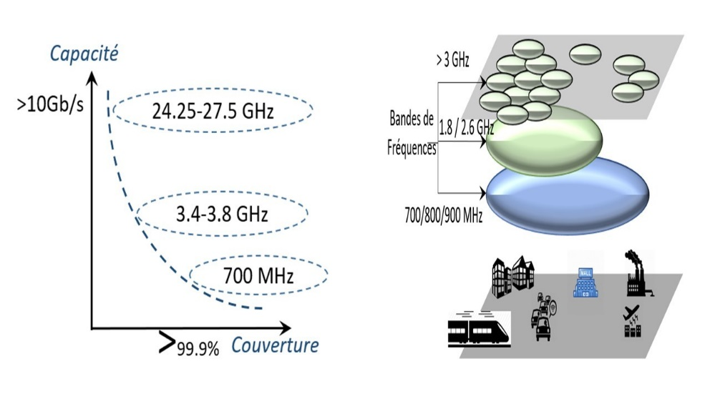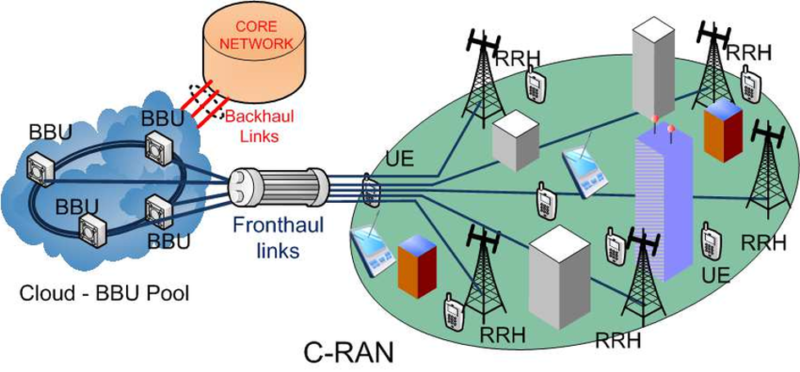Load balancing and resource allocation
First part of our series of articles on our collaboration with Télécom SudParis about the architectures of cloud access networks.
Background
Today’s wireless networks have a flat topology that relies on macro-cells using low frequencies (between 700 MHz and 2.6 GHz) to deliver their performances.
This architecture is hugely expensive for operators in terms of rolling out and running base stations, as each of them needs to have its own baseband processing unit, as well as his own backhaul link to be connected to the backbone network. What’s more, this virtually static architecture results in resources being under-used when a user activity in the macro-cell is low.
As demand for bandwidth grows and services evolve, the 4G and in particular 5G wireless networks have moved towards topologies that include macro, micro and pico-cells using different frequency bands (low, medium and high).

Cell frequency coverage
The medium and high bands (more than 3GHz), have a larger bandwidth and provide higher capacities but at the cost of coverage reduction. In order to achieve the desired coverage level, and respect the service continuity constraints, cells densification becomes mandatory to ensure coexistence of 2G, 3G, 4G and 5G cellular technologies. This may generate a high level of interference between neighboring cells (frequency reuse, harmonic interference, cross layer interference in TDD mode) and an increase of the number of handovers (intercells and interRAT).
C-RAN architectures
In response to these problems, access networks have adopted a new cloud architecture called C-RAN, in which the units processing the base station signal (which was previously placed on the same level as the station itself) are transferred to the cloud and centralised.
This centralisation provides a comprehensive view of all the macro and micro-stations rolled out. It also enables coordination of their signal processing, their power controls and the management of interferences between cells and devices.

Under this model, the base station is broken down into two separate entities: RRH (Remote Radio Head) and BBU pool (BaseBand Unit) connected via a fibre optic link called the fronthaul.
This architecture has many benefits:
Improved cell capacity and enhanced management of interferences
Densification of the network supporting Massive MIMO with more diverse frequency ranges
Significant cost reduction, as just one signal processing entity is needed for a larger number of antennas
Issues and solutions
Even so, managing interferences between different antennas and allocating resources between different users and cells are still highly complex issues to resolve in C-RAN architectures.
This is why we’re working with Télécom SudParis a research project to resolve these issues:
Solutions for load balancing between neighbouring cells and dynamic resource allocation in C-RAN architectures supporting techniques for cancelling inter-cell interferences, namely: Inter-cell Interference Coordination (ICIC) and Coordinated Multipoints (CoMP).
Study on sizing the fronthaul and the C-RAN capacity in terms of RRH aggregation, achieving different levels of functional split that allow the BBU pool to handle the ICIC and CoMP mechanisms, while remaining aligned with mobile users’ end-to-end latency constraints.
The goal of this project is to be able to implement denser C-RAN networks. It also involves aggregating a large number of dynamically managed RRHs to optimise the network’s capacity, while also minimising the level of interferences between neighbouring cells. The ultimate purpose is to cut operating costs (OPEX) and deployment costs (CAPEX) for wireless operators.
Contact : innovation@davidson.fr
